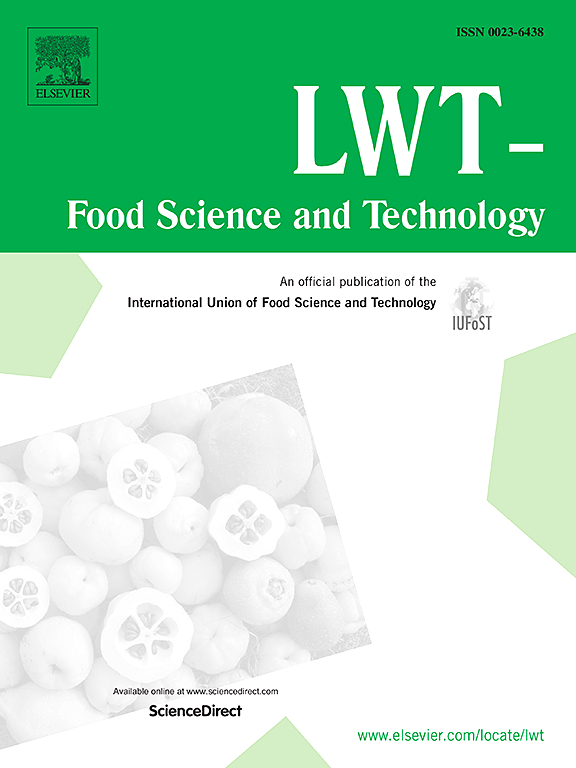Application of soybean protein isolates-polysaccharides hybrid emulsion gels as alternative fats in fabricating plant-based meats with two-phase
IF 6
1区 农林科学
Q1 FOOD SCIENCE & TECHNOLOGY
引用次数: 0
Abstract
One of the well-recognized challenges to develop plant-based meats with mimic texture and sensory properties of real meat is to fabricate multi-phase structures, including fibrous and fat-like components or phases. In this study, two-phase soybean-based meat analogs were prepared by integrating hybrid emulsion gels into a fibrous soybean protein matrix. The hybrid emulsion gels, composed of soybean protein isolates (SPI) and polysaccharides (konjac gum, curdlan and corn starch), functioned as the fat phase, with transglutaminase (TG) enhancing protein-polysaccharide compatibility and interphase bonding. The relationship between component dosages and the textural properties, as well as the interactions between polysaccharides and proteins, were systematically investigated using textural analysis, viscoelasticity measurements, FTIR and SEM. Results showed that additional of polysaccharide significantly increased the hydrogen bonding within SPI, as indicated by FTIR peaks at 2853 cm−1 and 2920 cm−1, altering its conformation and enhancing hydrophobic interactions. Two-phase plant-based meats containing 30% hybrid emulsion gel exhibited textural properties resembling those of pork belly, with hardness of 37.89 N, springiness of 78.15%, and cohesiveness of 0.74. The dimensional expansion rate after 30 min in boiling water was about 7.1%, indicating good water stability. The product also demonstrated good storage stability overtime.
将大豆分离蛋白-多糖混合乳液凝胶作为替代脂肪,用于制造双相植物肉类食品
本文章由计算机程序翻译,如有差异,请以英文原文为准。
求助全文
约1分钟内获得全文
求助全文
来源期刊

LWT - Food Science and Technology
工程技术-食品科技
CiteScore
11.80
自引率
6.70%
发文量
1724
审稿时长
65 days
期刊介绍:
LWT - Food Science and Technology is an international journal that publishes innovative papers in the fields of food chemistry, biochemistry, microbiology, technology and nutrition. The work described should be innovative either in the approach or in the methods used. The significance of the results either for the science community or for the food industry must also be specified. Contributions written in English are welcomed in the form of review articles, short reviews, research papers, and research notes. Papers featuring animal trials and cell cultures are outside the scope of the journal and will not be considered for publication.
 求助内容:
求助内容: 应助结果提醒方式:
应助结果提醒方式:


